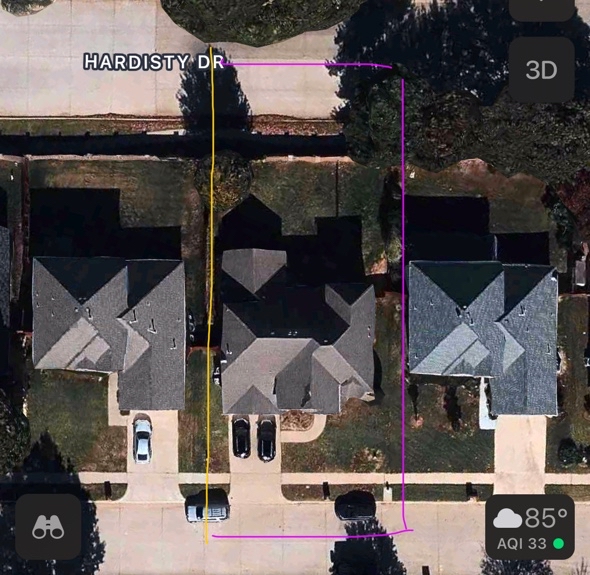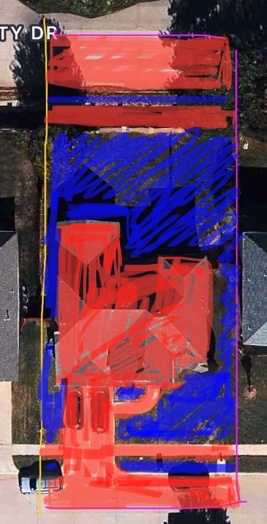You may have noticed that the world is fascinated with terraforming Mars, but a paradox exists. While Elon Musk and others dream of breathing life into the barren Martian landscape, taking what is dead and making it suitable for life, we collectively, and yet simultaneously, pursue an opposite transformation on Earth.
What is Necroforming? The Earth’s Unseen Transformation
Terra Forming is transforming a planet to be more earth like, then the reverse process, which I term ‘necroforming,’ involves turning vibrant ecosystems into lifeless expanses of concrete. Transforming the living to dead. Taking grasses and trees and other living surface cover and replacing it with concrete and synthetic turf. Taking fertile soil and preventing its productive use.
The Spread of Concrete
The use of concrete, emblematic of modern development, has surged globally. This expansion signifies more than just urban growth; it represents the steady encroachment of man-made landscapes on natural habitats. Data reveals a worrying trend: an escalating replacement of green spaces with concrete, a silent yet profound change in our planet’s fabric.
Concrete as a heater
The consequences of this transformation are profound.
The heat difference between a concrete surface and a grassy area in summer is a simple demonstration of this impact. Walking barefoot, the scorching concrete drives us instinctively to seek refuge on cooler grass, a reminder of the unnatural heat retained by urban materials. But how much of a heat impact does that make. I have an IR heat gun, and the temperature in direct sunlight of grass and bushes is as much as 30-40 degrees F cooler than immediately adjacent light grey concrete. Black Asphalt is worse.
How much of a temperature difference does that make at scale?
Let’s start small. Let’s look at one of the houses we have lived in while in Texas.

We had a street in front and behind, we also had a sidewalk in front and back and a large part of our lot was taken up by the house, but still had a front, back and two side yards. When I overlay that with “what is alive and 90 degrees” vs what is “Dead and 130 degrees” it looks like this:

To my eye that is probably close to a 50/50 split. Assuming basic math works, then my lot before the house was built would have been 0.2 acres at 90 degrees F, but now is probably an average of 110 degrees F. There are 400+ houses in a typical Texas development like ours. converting acres and acres of surface area in to heat generating Necroscapes.
And to make it worse, there is an active trend to replace what grass is present in a typical backyard with turf. Potentially taking the alive to dead ratio well below 50/50 to 80/20 or worse, raising the average lot temp by another 10-20 degrees in the process.
Other negative side effects.
I like to keep my blog posts short and focused, but there are other negative side effect to the removal of trees and grasses. So just a short blurb on much larger topics.
Biodiversity suffers as habitats shrink. Remember lightning bugs and ladybugs? When 50% of the surface area is dead, they don’t have a habitat.
Concrete is waterproof. So furthermore, concrete’s impermeability leads to increased flooding and diminished groundwater replenishment. Water that would flow into the ground to support trees, runs down driveways and sidewalks into curbs and streets, and then into storm drains. Then you get to buy that back to water your lawn and trees.
Trees and ground cover can produce food. Check out the average food stuff produced by a mature apple tree, a pre-blight american chestnut tree, or a pecan tree, or other berries and bushes. Concrete produces none of that.
Concrete is a Literal Tombstone
Concrete can be seen as a tombstone for once-living ecosystems. I feel this reflects the finality and gravity of transforming a thriving natural space into a lifeless urban or suburban area.
You are part of the solution
Combatting necroforming requires innovative urban planning. But start with your own plot of land. Don’t buy a turf lawn. Plant shade trees that meaningfully cover your concrete and house. Plant creeping plants and trellises where there are large expanses of brick exposed to the sun.
Try to make your lot closer to 90F in direct sunlight than it is to 130F. You’ll save money on AC too.
At a city hall level, integrating green spaces, reducing the number of mandated parking spaces for business, using permeable materials, and exploring eco-friendly alternatives to traditional concrete are crucial steps.
Conclusion
Necroforming, the antithesis of terraforming, is in my mind more critical to take action on than carbon emissions. Don’t get distracted by dream of transforming distant worlds, we must also stop actively killing the life supporting ability of our own.
It’s a call to action, urging us to rethink our relationship with the natural world and our role in its future. If you agree, share this post. Comment and like the post you found it.